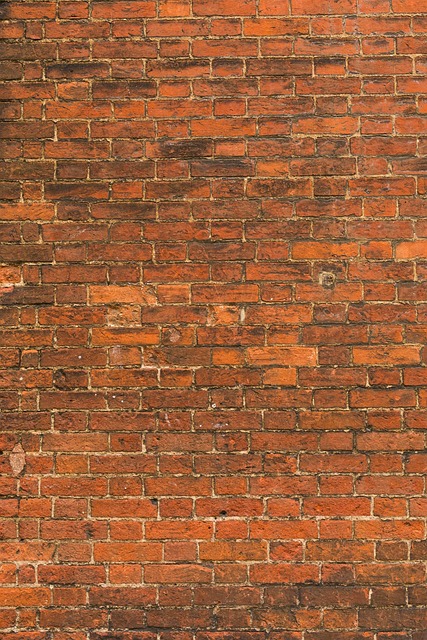Grout lines require regular cleaning and sealing to prevent stain buildup caused by moisture, dirt, and debris. Use specialized cleaning agents like enzymatic cleaners or baking soda paste for effective removal. Prompt action, mild detergents, and soft tools maintain grout health, preserving tiled surfaces' aesthetic appeal.
Grout lines, those intricate patterns between tiles, aren’t just aesthetic; they play a crucial role in waterproofing and sealing your surfaces. However, these high-traffic areas are also prone to staining from dirt, grime, and various substances. This article delves into the world of grout line protection and cleaning, offering insights on understanding grout’s significance, identifying common stain causes, and implementing effective removal methods. Learn how to choose the right products and maintain your grout lines for a long-lasting, pristine finish.
Understanding Grout Lines and Their Significance

Grout lines, those narrow gaps between tiles in floors or walls, are not just functional spaces for sealing and supporting tiles; they’re also integral to the overall aesthetic appeal of tiled surfaces. These lines serve as a framework that accentuates the layout and design of tiles, but over time, they can become susceptible to stains from spills, dirt, and even mold. Regular cleaning and protection are essential to maintaining their beauty and integrity. Effectively removing stains from grout lines requires using suitable cleaning agents and tools tailored for this specific task, ensuring both deep cleaning and long-lasting protection.
Common Causes of Stains in Grout

Stains in grout lines are a common problem, often arising from various factors that contribute to their discolouration over time. One primary cause is moisture infiltration, especially in areas with high humidity or poor drainage, leading to the growth of mould and mildew, which can leave behind unsightly marks.
Another significant contributor is the accumulation of dirt, grease, and other debris, particularly in high-traffic areas like kitchens and bathrooms. Spills, splashes, and tracked-in grime can all leave their mark on grout lines, making them appear discoloured or disfigured. Additionally, certain types of tile and grout combinations are more prone to staining due to their porosity or the chemical composition of the grout material itself. To effectively remove stains from grout lines, understanding these causes is key, enabling homeowners and professionals to implement appropriate cleaning strategies and protect these intricate details.
Effective Cleaning Methods for Grout Lines

Maintaining grout lines is an essential part of keeping your tile work looking pristine. When it comes to cleaning, understanding effective methods for remove stains from grout lines is key. Start by using a soft-bristled brush or sponge to gently scrub away any loose debris or dirt. This initial step helps to prevent further penetration of stains.
For more stubborn marks, try applying a mixture of baking soda and water, creating a paste that can be rubbed into the grout. This natural cleaner is effective in lifting grease, grime, and even mold. Let the paste sit for a few minutes before rinsing thoroughly with warm water. Regular cleaning and sealing of grout lines will ensure longevity and maintain the overall aesthetic appeal of your tiled spaces.
Protecting Grout from Future Stain Buildup

Protecting grout lines from future stain buildup is an essential step in maintaining the cleanliness and aesthetic appeal of your tiled surfaces. Regular cleaning plays a crucial role, but preventing stains from forming in the first place can save you time and effort. One effective method is to apply sealing products specifically designed for grout. These sealers create a protective barrier, filling in pores and preventing dirt, grime, and other contaminants from embedding themselves into the grout, making removal much easier.
Additionally, using the right cleaning tools and solutions is vital. Opt for soft-bristled brushes or microfiber cloths to gently scrub away surface stains without causing damage. Avoid harsh chemicals that could etch or discolor the grout. Regular mopping with a pH-neutral cleaner helps remove loose dirt, while deeper cleans should focus on targeted stain removal techniques. By combining sealing, careful cleaning practices, and prompt stain addressing, you can ensure your grout lines stay pristine and free from unsightly buildup.
Choosing the Right Cleaning Products

When it comes to grout line protection and cleaning, selecting the appropriate cleaning products is a crucial step. The goal is to remove stains from grout lines effectively while preserving the integrity of the material. It’s important to note that not all cleaning agents are created equal; some can even cause damage if used incorrectly.
For effective stain removal, opt for grout-safe cleaners that are designed to dissolve tough residues without abrading the surface. Enzymatic cleaners, for instance, are known for their ability to break down organic stains naturally. Always read product labels and follow instructions carefully to ensure you’re using the right approach for your specific grout lines, whether it’s ceramic, stone, or vinyl.
Maintenance Tips for Long-Lasting Grout Lines

Regular maintenance is key to preserving grout lines and keeping them looking their best. Here are some easy tips to ensure your grout lines remain intact and free from stains. Firstly, regular cleaning with a mild detergent and a soft-bristled brush helps remove dirt and grime buildup. This simple step prevents the accumulation of debris that can lead to staining over time.
When it comes to removing stains from grout lines, prompt action is crucial. As soon as a stain appears, use a mixture of baking soda and vinegar to create an effective cleaning solution. Apply this paste to the stained area, let it sit for a few minutes, then scrub gently with a damp cloth or sponge. This natural and cost-effective method can effectively lift even tough stains without damaging the grout.
